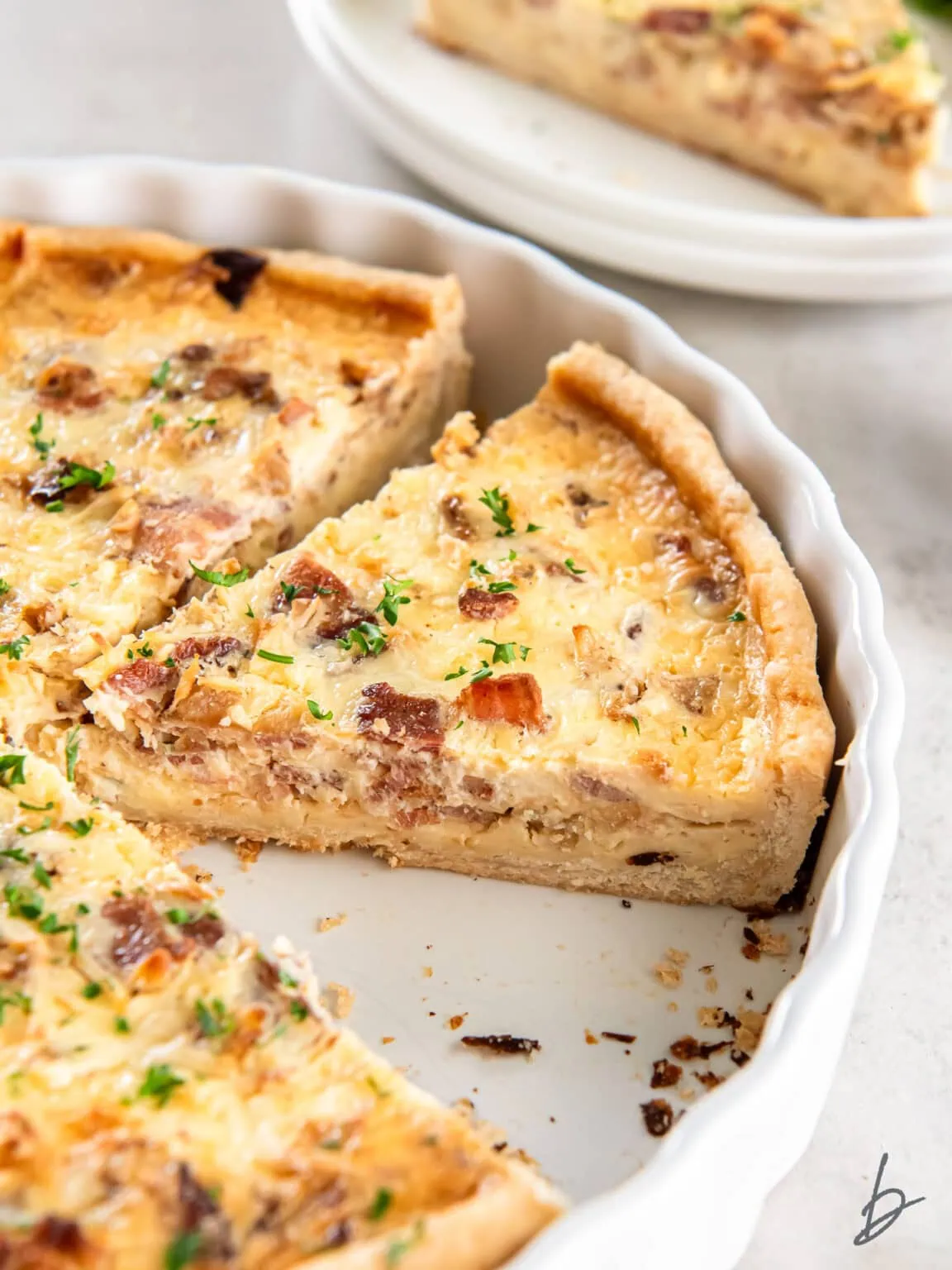French breakfast foods offer a delightful start to your day. These morning treats range from flaky pastries to hearty dishes, all showcasing the best of French cuisine.
You’ll find options that are both easy to make at home and fun to try when visiting France.
French breakfast foods can give you a taste of France without leaving your kitchen. From sweet croissants to savory tartines, there’s something for every taste.
Whether you’re looking for a quick bite or a leisurely meal, French breakfast dishes provide a variety of flavors and textures to enjoy.
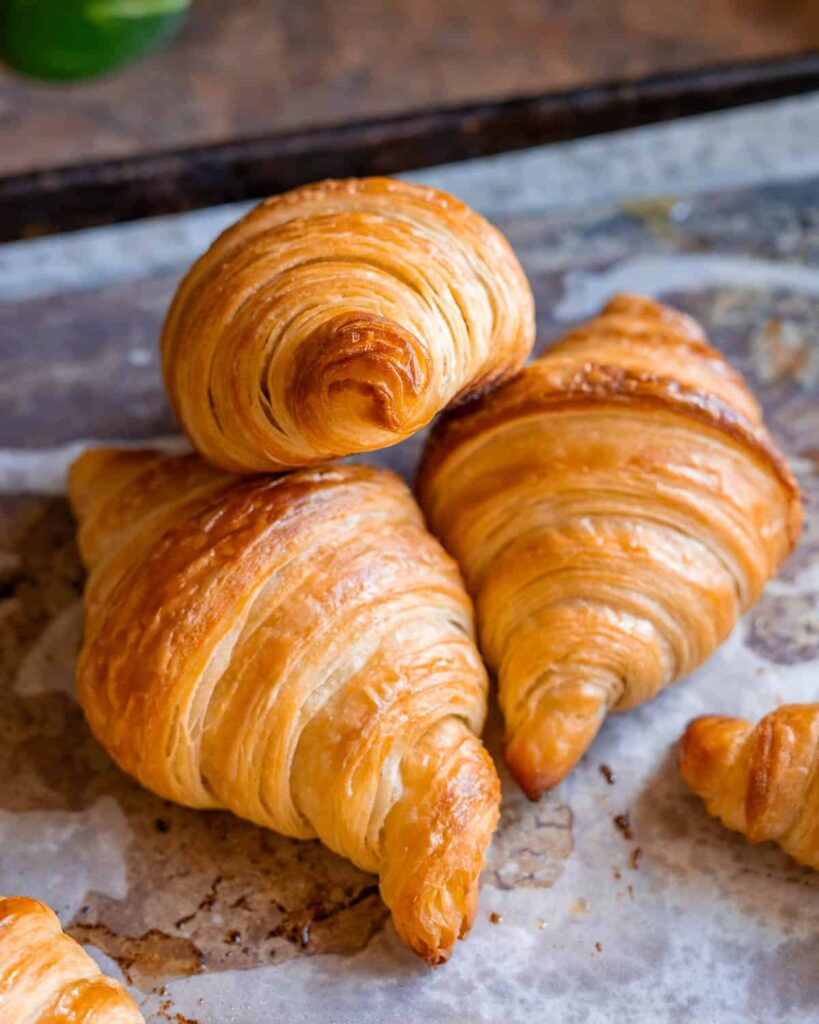
1. Croissant
The croissant is a French breakfast staple. This flaky, buttery pastry has a crescent shape that’s easy to spot.
You’ll find croissants in bakeries all over France.
Croissants are made with layers of dough and butter. The process of folding and rolling creates their signature texture.
When baked, they turn golden brown and crispy on the outside.
You can enjoy croissants plain or with jam. Some people like to dip them in coffee or hot chocolate.
For a heartier meal, try a croissant sandwich with ham and cheese.
Fresh croissants are best eaten the same day they’re made. Their smell and taste make them a beloved part of French breakfast culture.
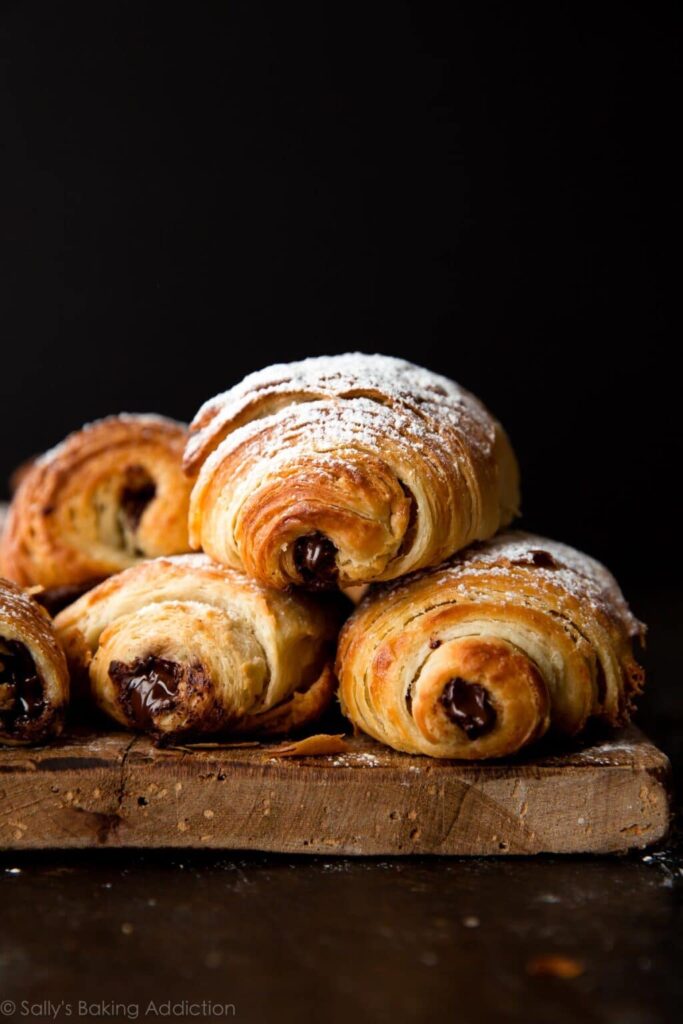
2. Pain au Chocolat
Pain au chocolat is a beloved French breakfast pastry. You’ll find this treat in bakeries across France and beyond.
It’s made with flaky, buttery dough wrapped around pieces of chocolate.
The pastry is rectangular in shape and baked until golden brown. When you bite into it, the layers of dough crackle and reveal the melted chocolate inside.
You can enjoy pain au chocolat warm or at room temperature. It pairs perfectly with coffee or hot chocolate for a sweet morning meal.
Many people also eat it as an afternoon snack.
While similar to a croissant, pain au chocolat has its own distinct shape and chocolate filling. It’s a must-try for anyone visiting France or exploring French cuisine.
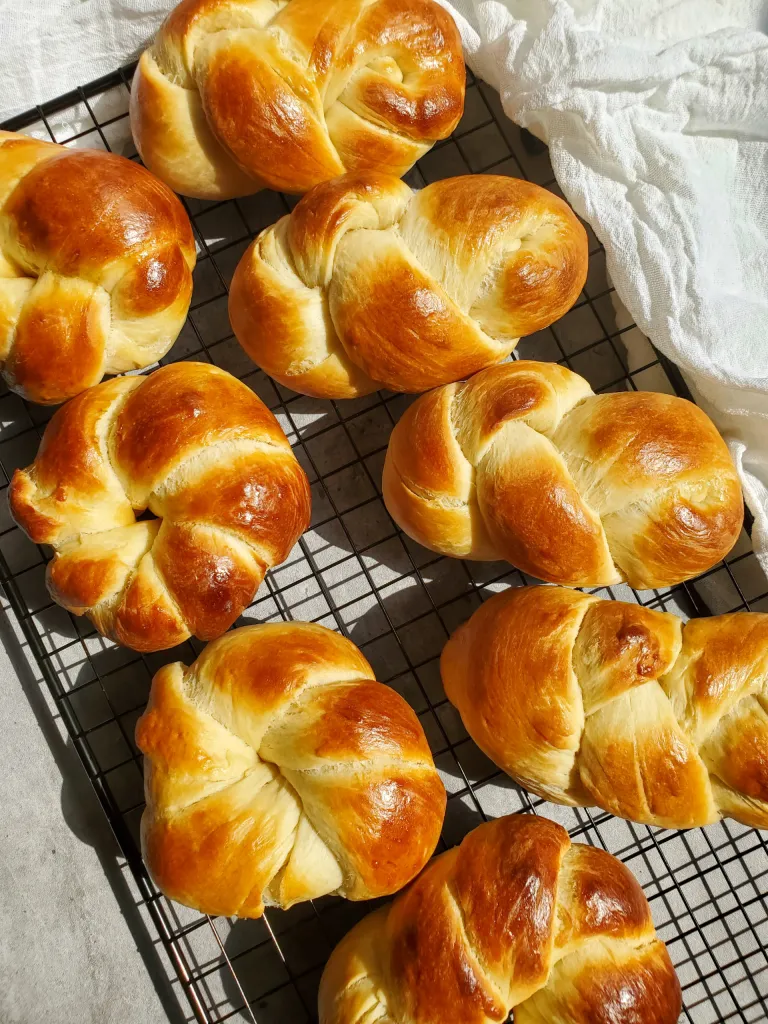
3. Brioche
Brioche is a rich, buttery bread that’s a staple of French breakfast tables. You’ll find this golden-hued treat both soft and slightly sweet.
Brioche gets its luxurious texture from eggs and butter. It’s often shaped into small rolls or a large loaf.
You can enjoy brioche plain or with a spread of jam. It’s also great for making French toast.
Some versions come with chocolate chips or fruit baked in.
Try toasting a slice of brioche and adding a pat of butter. The warmth brings out its delicate flavor.
Pair it with coffee or hot chocolate for a classic French breakfast.
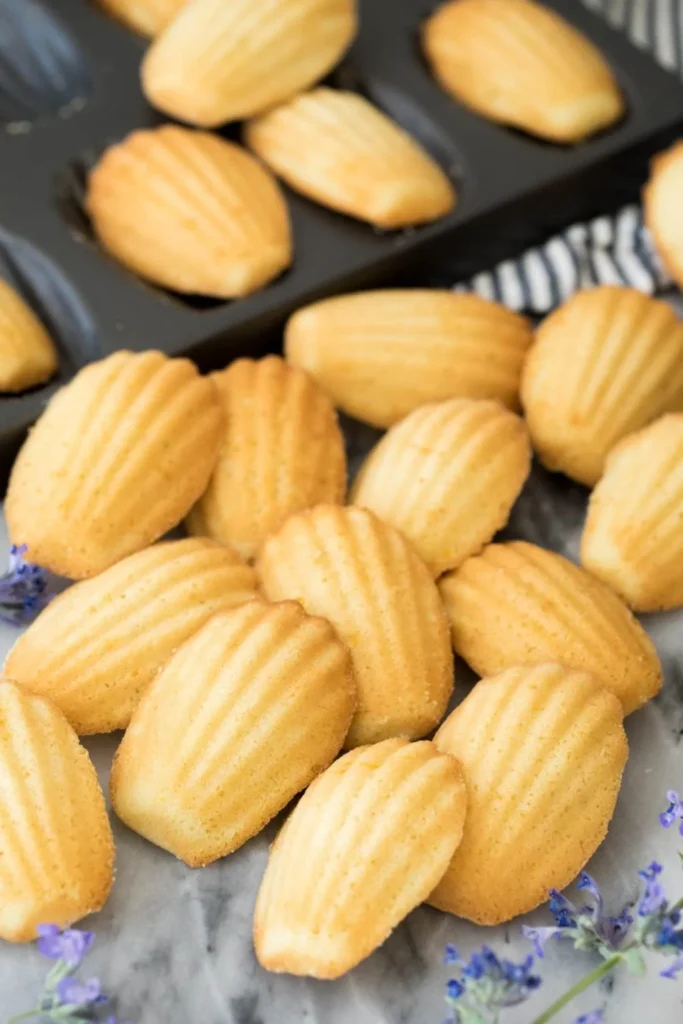
4. Madeleine
Madeleines are small, shell-shaped sponge cakes that make a delightful addition to your French breakfast. These buttery treats have a soft, fluffy texture and a distinctive bump on one side.
You can enjoy madeleines plain or flavored with vanilla, lemon zest, or other subtle additions. Their golden edges and light, airy centers result from baking at a high temperature for a short time.
To eat madeleines, dip them in your morning coffee or tea. They’re best served warm, right out of the oven.
You can find madeleines in French bakeries or try making them at home for a fresh, authentic experience.
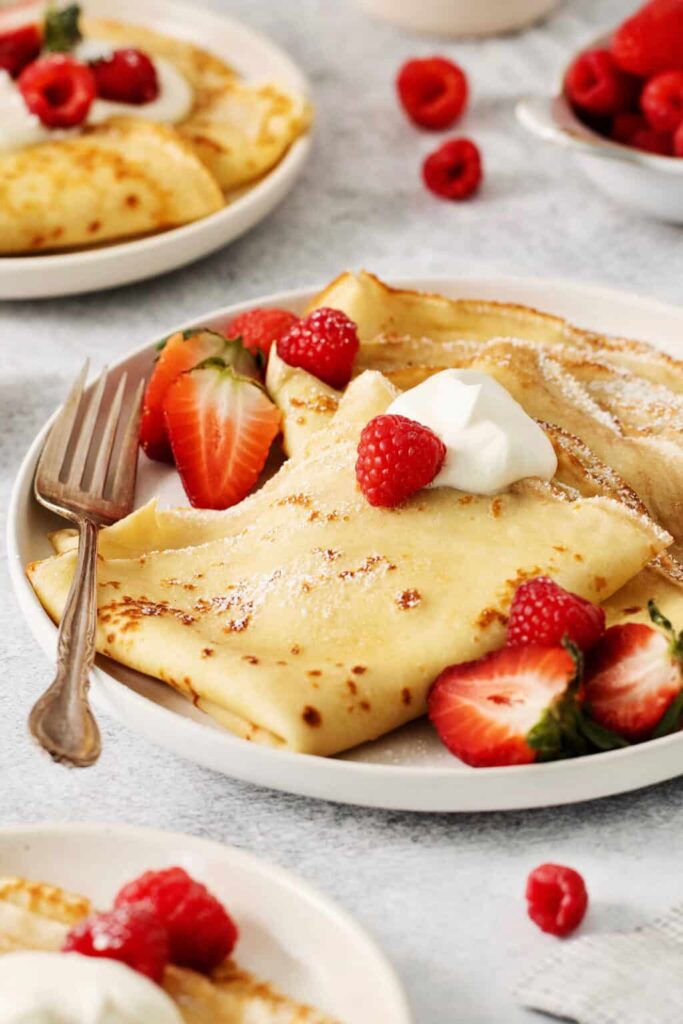
5. Crêpes
Crêpes are a staple of French breakfast cuisine. These thin, delicate pancakes can be enjoyed sweet or savory.
You can make them at home with just flour, eggs, milk, and butter.
For a classic sweet breakfast, spread Nutella or jam on your crêpe and roll it up. If you prefer savory, try filling it with ham and cheese.
In France, crêpes are often sold from street carts. You can eat them on the go or sit down to enjoy them at a café.
They’re perfect for a quick breakfast or a leisurely weekend brunch.

6. Quiche Lorraine
Quiche Lorraine is a savory French tart that’s perfect for breakfast. It features a flaky pastry crust filled with a creamy egg custard.
The classic recipe includes bacon and cheese. You’ll find crispy bacon pieces and melted Gruyère or Swiss cheese mixed into the egg filling.
To make quiche Lorraine, you start by blind baking the crust. Then you add the cooked bacon and cheese before pouring in the egg mixture.
The quiche bakes until golden and set. When done, it has a rich, custardy texture that’s both comforting and satisfying.
You can enjoy quiche Lorraine warm or at room temperature. It’s a versatile dish that works well for brunch or light meals too.
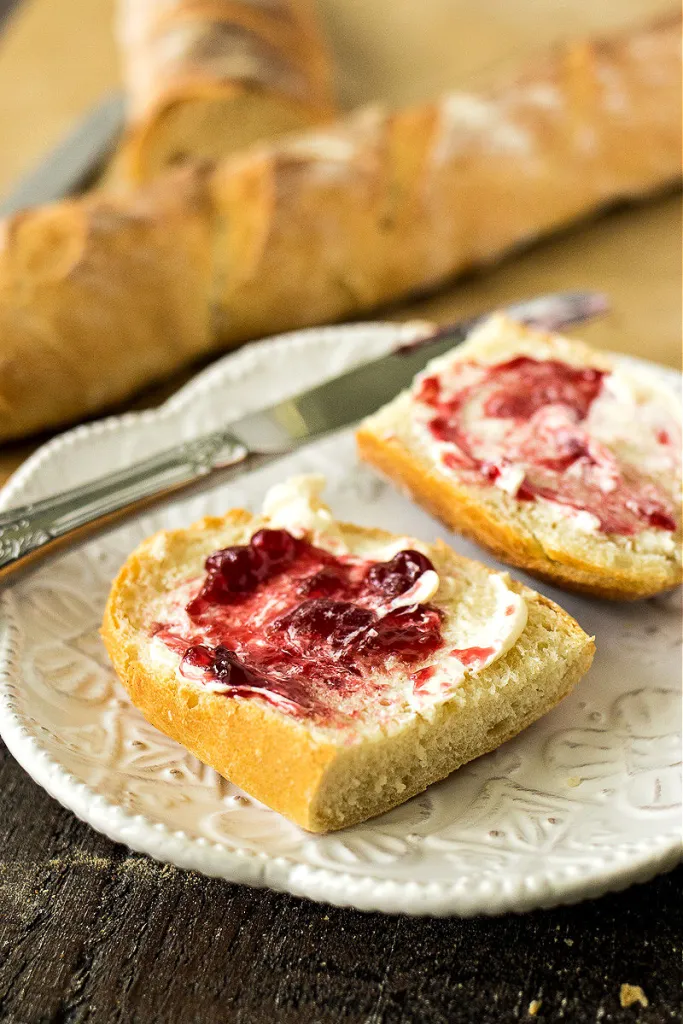
7. Baguette with Butter and Jam
A classic French breakfast staple is the baguette with butter and jam. You’ll find this simple yet delicious combination in homes and cafes across France.
Start with a fresh, crispy baguette. Slice it lengthwise or into rounds. Spread a thin layer of butter on each piece. The butter should be soft enough to spread easily.
Top the buttered bread with your favorite jam. Popular choices include strawberry, apricot, or raspberry. For an authentic touch, use homemade preserves.
Pair your baguette with a hot drink like coffee or tea. Some people enjoy dunking the bread in their beverage before taking a bite.
This breakfast is quick, tasty, and quintessentially French.
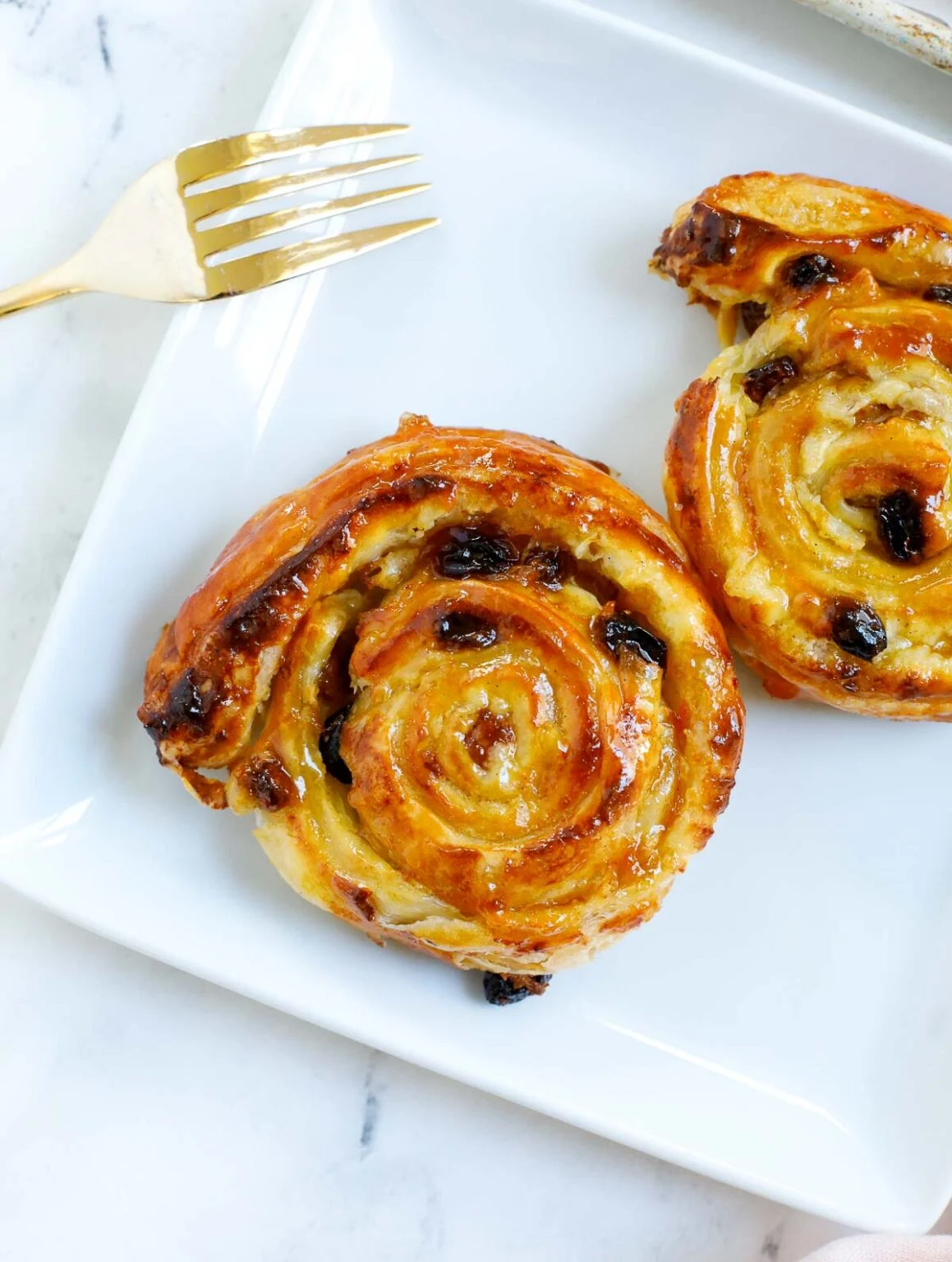
8. Pain aux Raisins
Pain aux raisins is a delightful French pastry you’ll often find at breakfast. It’s a spiral-shaped treat made with buttery, flaky dough similar to croissants.
The dough is rolled out and spread with a layer of creamy custard. Plump raisins are then sprinkled over the custard before the pastry is rolled up and sliced.
When baked, pain aux raisins turn golden brown and develop a slightly crispy exterior. The inside remains soft and gooey, with the custard and raisins creating a sweet, satisfying filling.
You can enjoy pain aux raisins on its own or pair it with a cup of coffee or tea for a perfect French breakfast experience.
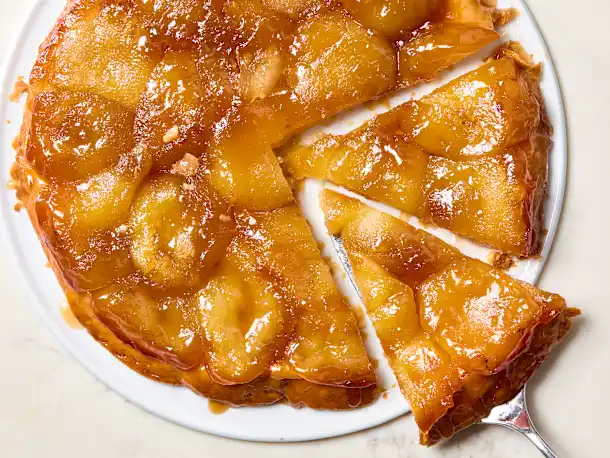
9. Tarte Tatin
Tarte Tatin is a sweet treat you can enjoy for breakfast in France. It’s an upside-down caramelized apple tart that pairs well with coffee.
This dessert was created by accident in the late 1800s by sisters Stéphanie and Caroline Tatin at their hotel. It has since become a beloved French classic.
To make Tarte Tatin, apples are cooked in butter and sugar until caramelized. A pastry crust is placed on top, and the whole thing is baked. When served, it’s flipped upside-down to reveal the golden apples.
You’ll love the mix of sweet caramel, tender apples, and flaky crust. It’s a unique and delicious way to start your day in France.

10. Café au Lait
Café au lait is a classic French breakfast drink. It combines coffee with steamed milk for a warm, comforting beverage to start your day.
The name simply means “coffee with milk” in French. You’ll often find it served in a wide, bowl-like cup perfect for dipping pastries.
To make café au lait at home, brew strong coffee and heat milk separately. Pour equal parts of each into your cup. For an authentic touch, use a French press for the coffee.
This drink differs from a latte. Café au lait uses regular brewed coffee instead of espresso. It’s a simpler, more casual morning ritual in French households.
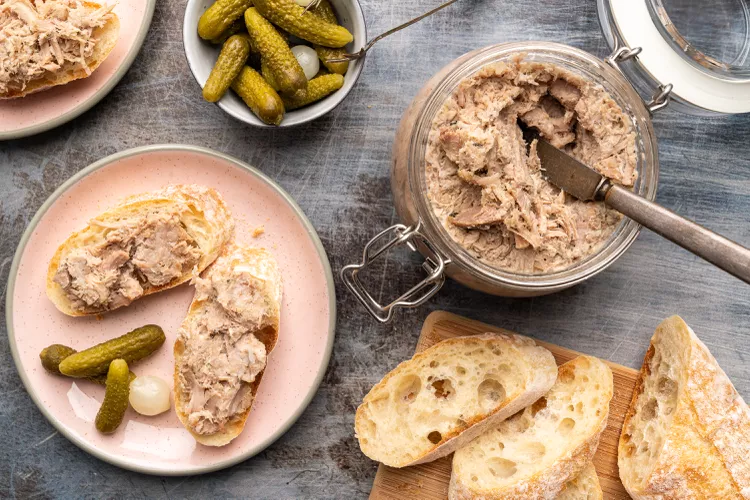
11. Rillettes
Rillettes are a savory French spread you can enjoy for breakfast. They’re made from slow-cooked, shredded meat – often pork, duck, or goose.
The meat is seasoned and mixed with fat to create a smooth, spreadable texture.
You can spread rillettes on crusty bread or toast for a rich morning meal.
This protein-packed option gives you a hearty start to your day. Rillettes have a rich, meaty flavor that pairs well with coffee or tea.
You can find rillettes in many French markets or make them at home. They’re a tasty alternative to more common breakfast spreads.
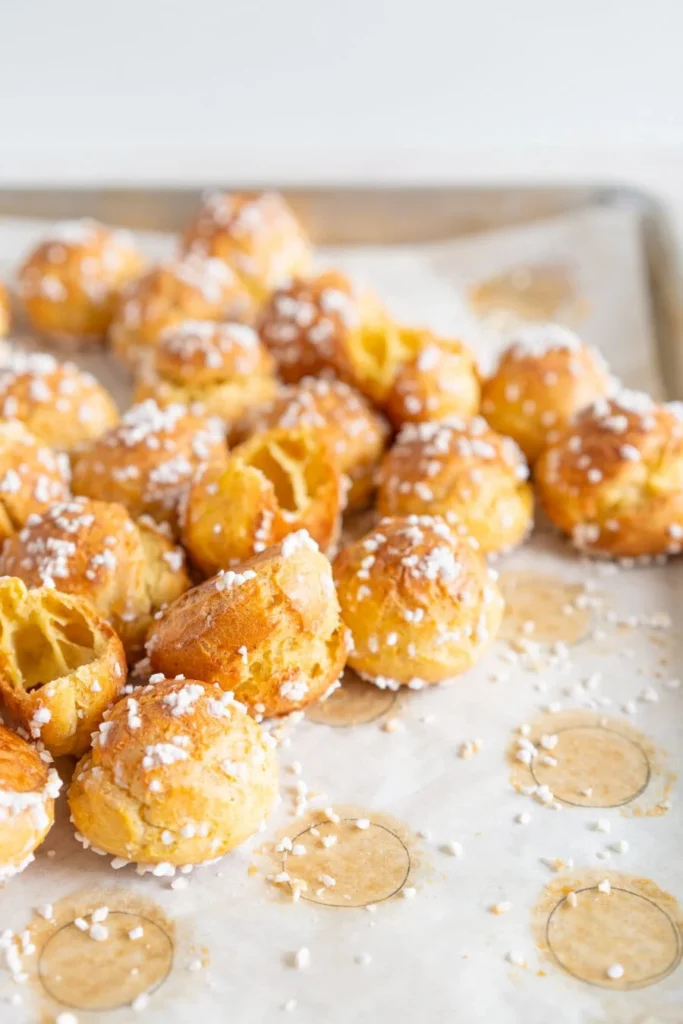
12. Chouquettes
Chouquettes are delightful French sugar puffs that make a perfect breakfast treat. These light and airy pastries are made from choux dough, the same base used for eclairs and cream puffs.
To make chouquettes, you’ll mix water, butter, sugar, and salt in a saucepan. After heating, you’ll add flour to form the dough. Once cooled, eggs are mixed in to create the signature puffy texture.
The dough is then piped or spooned onto baking sheets. Before baking, the puffs are sprinkled with pearl sugar, giving them a sweet crunch. Bake at a high temperature until golden brown and crisp.
Enjoy these bite-sized treats with your morning coffee or as a sweet snack any time of day.
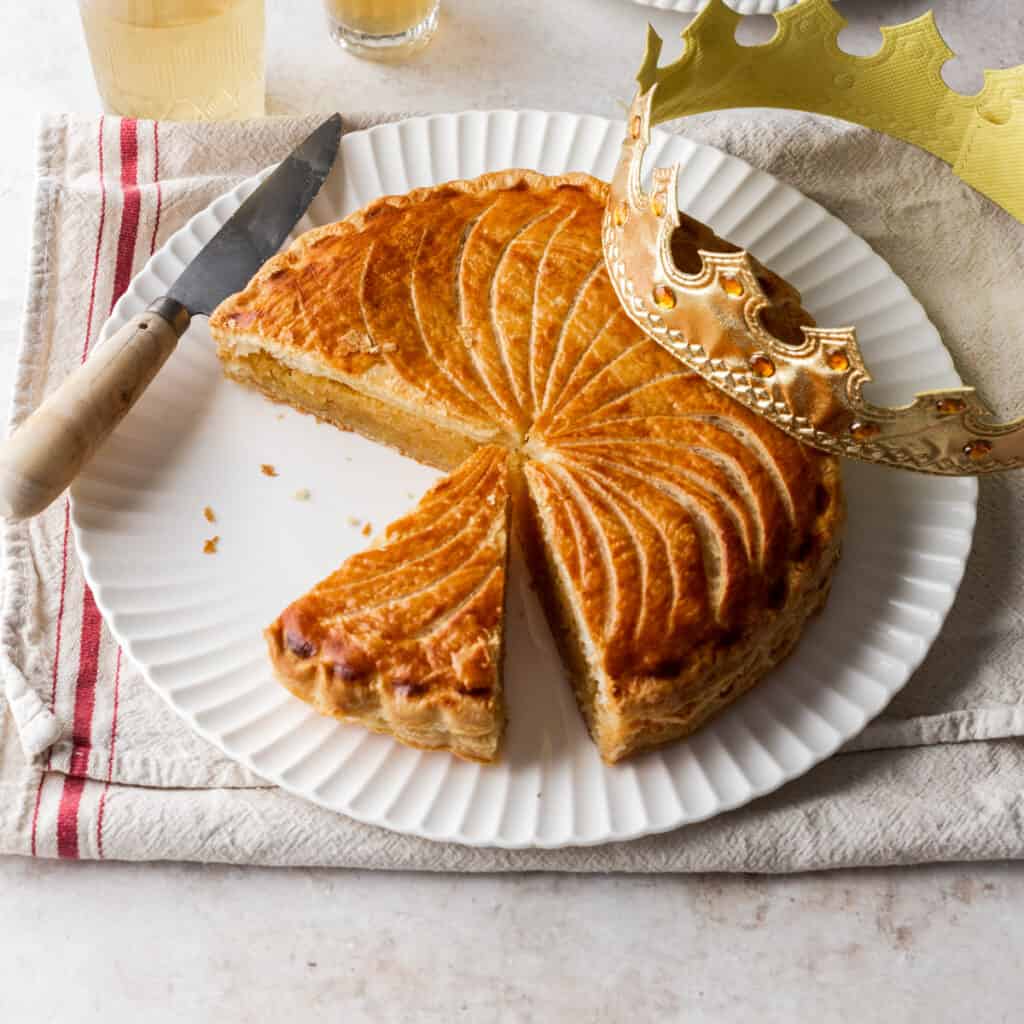
13. Galette des Rois
Galette des Rois is a traditional French pastry enjoyed during the Epiphany season. This flaky treat consists of two layers of puff pastry filled with a rich almond cream.
To make it, you spread almond cream on one pastry circle and cover it with another. The edges are sealed, and the top is decorated with knife patterns.
Bake the galette at 350°F (180°C) for about 35 minutes until golden brown. A small charm or figurine is often hidden inside, and whoever finds it becomes “king” for the day.
Enjoy this delicious pastry with family or friends as a special breakfast or dessert during January. Its buttery, nutty flavor makes it a beloved French tradition.

14. Beurre Croissant
Beurre croissants are a French breakfast staple. These flaky pastries are made with pure butter, giving them a rich flavor and golden color.
You’ll find beurre croissants in bakeries across France. They’re best enjoyed fresh from the oven, still warm and crispy on the outside.
To eat a beurre croissant, tear it apart with your hands. The layers should separate easily, revealing a soft, buttery interior.
You can enjoy your croissant plain or spread with jam. Some people like to dip them in coffee or hot chocolate for a truly indulgent breakfast treat.
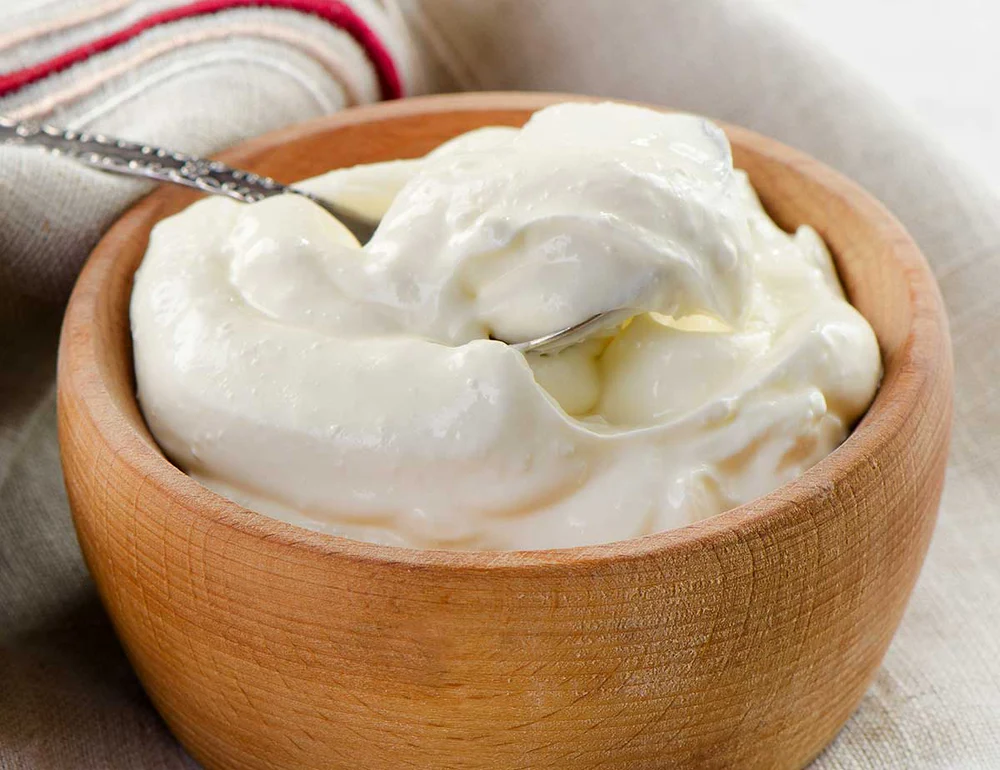
15. Fromage Blanc
Fromage blanc is a fresh, creamy cheese that sometimes appears on French breakfast tables. It has a mild, slightly tangy flavor similar to yogurt.
You can enjoy fromage blanc plain or with a drizzle of honey for a touch of sweetness. Some people like to add fresh berries or other fruit on top.
For a savory option, try spreading fromage blanc on toast and topping it with sliced radishes and a sprinkle of salt. This makes for a light yet satisfying breakfast.
Fromage blanc is also a good source of protein to start your day. Its smooth texture and versatility make it a tasty addition to a French breakfast spread.
History and Origin of French Breakfast Foods
French breakfast foods have changed a lot over time. They started as big meals and became lighter snacks. Different parts of France added their own flavors.
Cultural Significance
French breakfast is a key part of daily life. It shows how the French value good food and taking time to enjoy it.
In the past, workers ate a big meal to start their day. Now, people often have a quick bite before work or school.
Breakfast foods in France are tied to local traditions. In Brittany, you might have buckwheat crepes. The south of France offers olive oil instead of butter. These regional differences make French breakfast unique.
Evolution Over Time
French breakfast has changed a lot since the 1600s. Back then, people ate a big meal called “déjeuner” to start the day. It had meat, cheese, and bread. This was needed for a long day of work.
As time went on, breakfast got lighter. In the 1700s and 1800s, coffee became popular. People started eating pastries and bread with their coffee. The famous croissant showed up in the 1800s.
Today, a typical French breakfast is simple. You might have:
- A cup of coffee or hot chocolate
- A croissant or piece of bread
- Some jam or butter
This light meal fits today’s busy lives. But on weekends, many French people still enjoy a longer, more relaxed breakfast.
Ingredients Commonly Used in French Breakfast Cuisine
French breakfast dishes rely on a mix of classic baking ingredients and fresh seasonal produce. Local traditions and regional specialties shape the flavors and textures of morning meals across France.
Traditional Baking Staples
Flour, butter, and eggs form the foundation of many French breakfast pastries. Bakers use all-purpose flour for versatility, while butter adds richness to croissants and brioche. Eggs bind ingredients and create flaky textures.
Milk and cream feature in many recipes, from café au lait to crêpe batter. Sugar sweetens pastries and jams, while salt enhances flavors. Yeast is key for leavened goods like baguettes.
Chocolate appears in pain au chocolat and as a spread. Vanilla and almond extracts add subtle aromas to baked goods.
Seasonal and Regional Variations
Fresh fruits play a big role in French breakfasts, changing with the seasons. You’ll find strawberry jam in spring, apricot tarts in summer, and apple compote in fall.
Honey from local beekeepers sweetens yogurt and spreads on toast. Nuts like hazelnuts and walnuts add crunch to pastries and cereals.
In coastal areas, you might see seafood like smoked salmon on breakfast menus. Mountain regions favor hearty ingredients like cheese and cured meats.
Herbs like thyme and lavender infuse teas and add flavor to savory dishes. Local specialties, such as Provence’s olive oil or Normandy’s apple cider, bring unique tastes to the breakfast table.
